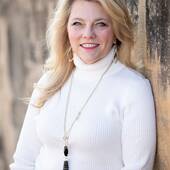
Barbara Rice never planned to be a teacher, and certainly not a science teacher, and most definitely not a science teacher who would head up Prince Edward Middle School’s Edible Schoolyard. But here she is, describing the tiny green space tucked in the heart of the middle school building, her blue eyes are as bright as a summer sky.
Like a tiny green sprout pushing up through the soil, small but full of promise, the edible schoolyard began with a facebook post and a tantalizing ‘I wonder if…’. Parents of students chimed in with interest and an organizational meeting was held. Despite the strong community support and interest, it was very much off the cuff at the beginning, explains Barbara.
“You’re familiar with the expression of building the plane while you’re flying it?” she says laughing, “Well that’s very much what it was.”
“I am not a gardener,” Barbara adds. “I figured this would be as much of a learning opportunity for me as it was for the students. And I am learning right along with them.”
A graduate of Old Dominion University, Barbara worked in the architectural engineering field before she and her geologist husband, Tom, made the decision to move from Richmond to Farmville to start and raise a family. It was through her children that Barbara found her second calling and discovered her love of teaching. Her children were enrolled in a co-op based pre-kindergarten program at Hampden-Sydney College and the woman who headed the program demonstrated remarkable ability to utilize the parents’ knowledge (many were professors at the college) and to engage the children. Barbara was deeply inspired by her. After working closely with the pre-K program and becoming what her husband laughingly called “head mommy”, Barbara found herself frequently substitute teaching at Prince Edward Elementary School. By 2011 she was graduating from Longwood with her Master’s degree in Elementary Education.
After one year teaching fifth grade math science, Barbara found her niche teaching sixth grade science—something she never expected.
Science was always out of my comfort zone,” she says. “I loved the idea of teaching math but science was different.” A three-week course with Science Education Instructor Dr. Suzanne Donnelly at Longwood University changed her mind. “I realized that you can find a link to science in everything you do, especially outside,” Barbara says. “It’s like playing. I think eventually you find what it is you're passionate about and I really love to teach science.”
From the beginning, the project has not only been blessed by the community and by parents, says Barbara, but also by school leadership. The garden area, which is enclosed by windowed classrooms, is in the center of the middle school building and had become overgrown over the years. One morning she arrived to discover it had been trimmed and cleared by school staff. It was time to stop planning and start planting.
The first of what are now nine raised beds were designed and built by her husband, Tim, and son, Brooks. The edible schoolyard was off and growing strong. And just like the tender spreading green tendrils of the carefully cared for green beans, the project has affected not just the school but the children’s lives as well.
“It is amazing the level of ownership the students take with the garden,” says Barbara. “They take ownership because it’s theirs.”
She fondly remembers one student who was tasked with the daily monitoring of the seedlings in the greenhouse. He began referring to them tenderly as the babies.
“He would come running down the hall in the mornings shouting, ‘Mrs. Rice, can I go check on the babies?’"
From seed to table, the edible schoolyard is student-led and produced. From the design and layout of the beds, to the preparation of the soil, to which vegetables to plant and raise—the students are there for all of it. And in a truly beautiful full circle moment, they are frequently allowed to wheel carts with freshly prepared salad from their garden to serve to fellow classmates in the school cafeteria.
The garden is also helping kids make better choices about healthy eating, according to Barbara.
“I can’t tell you the number of times we’ve been outside in the garden doing something, and I will watch a student just walk over and pluck a leaf of lettuce and eat it,” Barbara says. “They go to the grocery store with Mom and say ‘Hey can we get some kale to do kale chips?’ or ‘Can we do a salad tonight?’”
However, from a teacher’s standpoint the most powerful moments are when the students make connections—a tie in from math that suddenly forms a light bulb as they are counting plants or a deepened understanding of the scientific method while doing a soil experiment. “These are the things, the moments that make me love my job,” says Barbara.
The future of the garden is blooming literally, as another sixth grade science teacher is introducing aquaponics, an alternative gardening method using water and rock. Barbara herself is looking into exploring aeroponics, a method involving towers and wind. Perhaps best of all, the garden has created such a buzz that students are eager to enter sixth grade so they can be a part of it.
“I would love to see all the grades get involved one day, maybe with beds close to their rooms,” Barbara says, “Maybe we will have a signature school dish one day that we make solely from our own gardens.”
But for now, the sixth graders and Barbara are just grateful to be getting their hands dirty and watching their garden grow. “It gives us all a chance to go outside, and feel the heat from the sun. This is small scale now but it’s so exciting to know what could be.”






Comments (0)Subscribe to CommentsComment